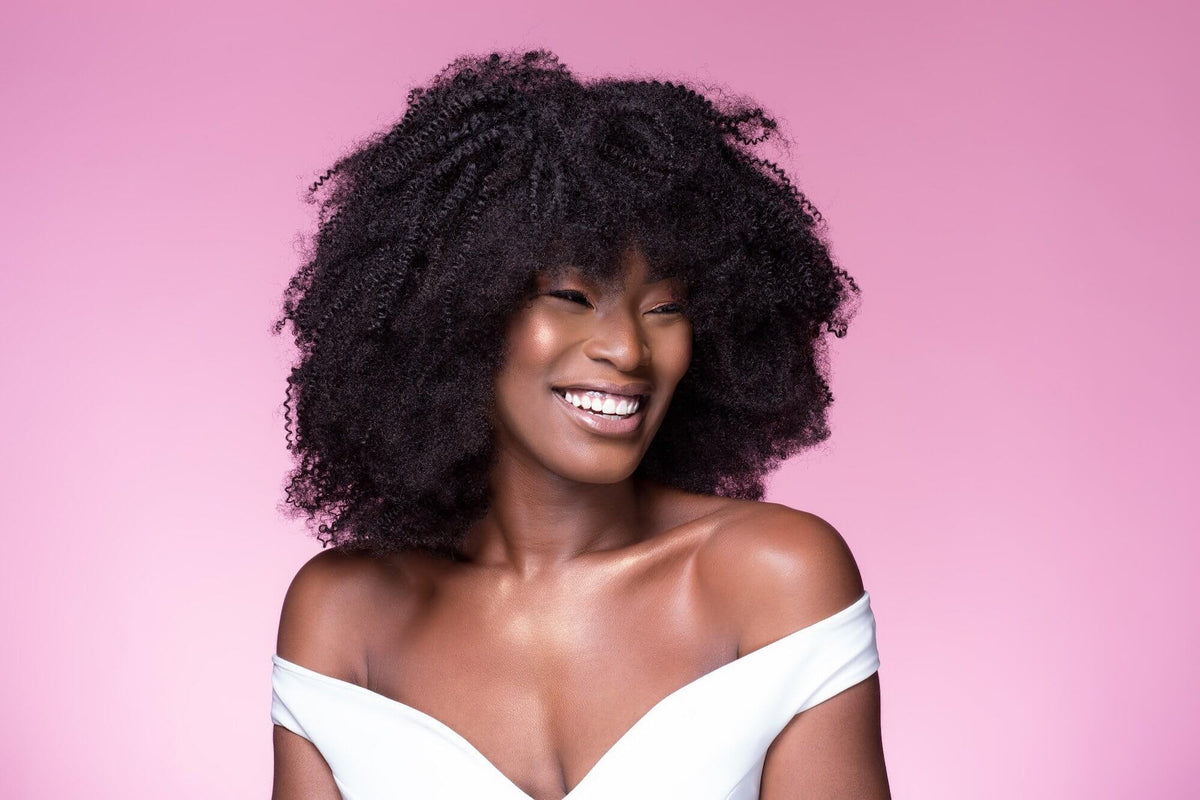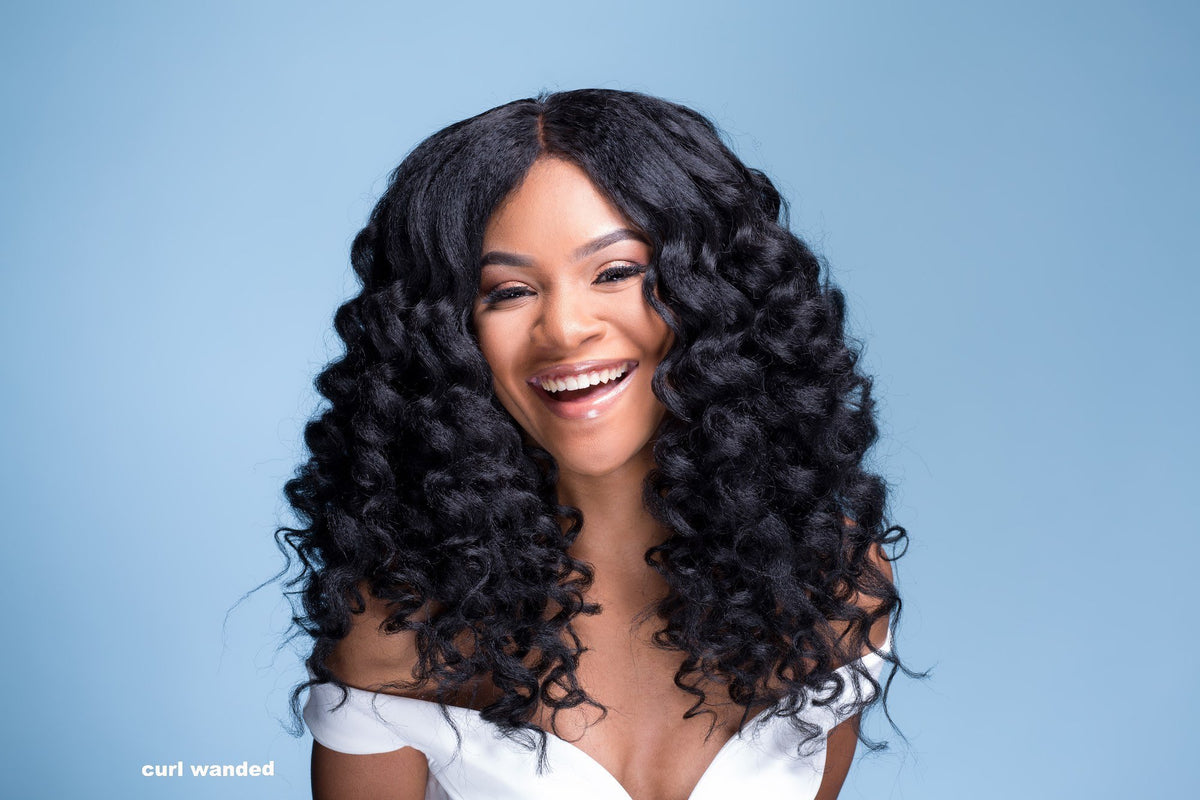
6 min read
Going natural is hard work, but it’s a journey you can be proud of once it is complete. If you have permed, relaxed or have worn natural hair extensions in your hair for most of your life, you can expect a long journey when you transition back to natural. Thankfully we have a few secrets that will help make the transition to natural hair process easier.
Steps to Transitioning to Natural Hair
Before you commit, challenge yourself to wear your hair naturally for one week. That means no flat iron, no chemicals, and nothing but tender loving care and a sturdy brush. This will give you a chance to see if you are ready to start your transition and give you insight into what natural hairstyles you prefer.
How you go about transitioning depends a lot on your natural curl type, the length of your hair, your overall comfort and your end goals. There are a lot of great products on the market that will help heal and repair damaged locks while you grow out your natural crown. Along with repair aids, invest in oils and lotions that will keep your hair and scalp moisturized. Here are a few other tips to help you transition.
Ask for help
Consult with a professional natural hair stylist and specialist. This is important if you are planning to transition by cutting off a large amount of hair at once, or if you plan to trim your hair as you grow it out. A hair care professional that is experienced with natural hair will be able to give you invaluable advice regarding which styles work well with multi-textured hair. Natural hairstyles will also be able to help you manage any breakage that occurs when you get new growth by providing regular trims.
Be patient and plan ahead
Set aside more time in your day for hair care. When your hair is treated with a perm or relaxer, or if you have usually worn it in braided extensions, chances are you never had to spend very much time caring and styling your hair. Natural hair requires extra time to detangle, moisturize and style. Hair that is in transition needs even more time since you will be dealing with two textures, healing roots and at times, very fragile hair. Give yourself the time you need to care for your hair properly so that the hair you have at the end of your transition is healthy and easy to maintain.
Embrace your curls
Be you, not the women in magazines or on Instagram. It’s easy to look at pictures on Instagram or in magazines and wish that your natural hair looked like someone else’s. Natural hair comes in a range of textures, colors, and lengths. These differences are what make natural crowns unique, beautiful and fierce.
Learn and discover
Watch videos on YouTube to learn interesting ways to style your natural curls. You can’t always run out to the hair salon or call a stylist for advice. Watching videos is a great way to get inspiration from people that have similar curls and texture as your own hair. You can also find a lot of great advice on hair products for natural hair to try out while you are in transition.
Trim your hair regularly
Commit to cutting your hair. When you transition from chemically treated to natural hair, you can reduce the amount of damage you face, but there is no way to completely prevent breakage. As your hair grows, don’t be afraid to trim broken and damaged hair as your natural length emerges.
Adjust your hair budget
Increase your hair budget. Chances are you have your hair routine down to a science, including the products you use and the best place to find them at the lowest prices. When you transition back to natural hair, you will end up buying a lot of products that you most likely will not be able to use completely. This is mainly due to the way your hair changes during transition and the fact that you need to learn a whole new routine with a whole new set of products. This will take a bit of trial and error, but in the end the cost will be worth the benefits of having a healthy head of natural hair.
Keep calm
Don’t stress out. Transitioning is not easy, and there will be times that it seems like nothing you are doing is working out the way you planned. It’s ok, don’t feel pressured to look a certain way, use a certain product, or obtain results according to other peoples time frame. Your choice to transition is personal and so is your journey.
Use your hands
Be gentle and use your hands. The area where your natural hair meets your previously processed hair is very fragile and will remain that way no matter how much love you give your curls. Always use your fingers to remove tangles while washing and to use a wide tooth comb when your hair is dry to follow up.
Create a plan
Make a hair transitioning plan before you start. There are plenty of guidelines out there of what you should and shouldn’t do when growing out your natural hair. Frankly, it can get confusing after a while. The best thing you can do for your transitioning journey is to make a plan in advance of what you want your goal to look like. Collect a collage of natural hairstyles that match your texture, research to find out which products will work to help you attain the look you desire. Have all the products you need for your journey on hand before you start to make your task that much easier.
Explore hair styles
Keep your options open. Everyone has a go-to hairstyle and you probably won’t find yours until your transition is complete. Some styles you see will look great on your hair, while others may not look so hot. Work with your hair, don’t battle against it. Avoid popular trends that pull at your edges or roots as they can be damaging to your hair during transition. You have endless options, find what works for you and makes you feel good.
Moisturize and condition regularly
Make moisture your friend. The most important thing you will do while transitioning to natural hair. Naturally curly or textured hair is drier that hair that is straight, so it’s important that you take extra care to moisturize. Aloe Vera, Jojoba oil, Almond oil and Shea butter are great products naturally packed with vital essentials to keep your hair soft, silky and well hydrated.
Honor wash day
Wash and condition often. Most ladies with chemically straightened hair tend to avoid water to maintain their sleek look, For those transitioning to natural hair, washing and conditioning on a regular basis is the only way to return your hair to its natural state. Make sure to wash and condition your hair every three days to remove excess dirt and hair products. Take care to always oil your scalp and roots after each wash.
Avoid heat styling
Avoid the heat. Transitioning will leave your hair in a flux of several textures. While this can be hard to deal with when you are trying to style your hair, its best to avoid using heating elements such as a flat iron or hair dryer. This will help reduce the chances of additional breakage and damage as well as help you keep your hair hydrated.
We hope these 13 tips will help you on your transition journey. Good luck!



